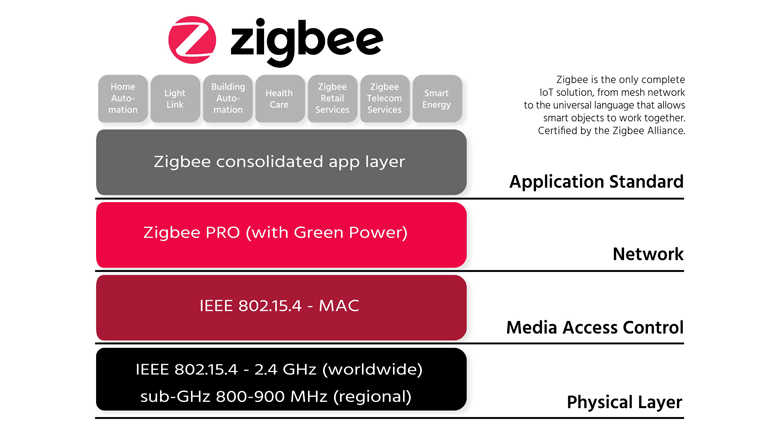The Zigbee Alliance have announced the availability of Zigbee PRO 2017, the latest offering in the Alliance’s flagship mesh networking technology designed to connect and facilitate interoperability between smart devices. Zigbee PRO is the underlying network technology that supports full-stack interoperable devices certified under Zigbee 3.0.
With PRO 2017, Zigbee is the first mesh network capable of operating in two ISM frequency bands simultaneously: sub-GHz 800-900 MHz for regional requirements and 2.4 GHz for global acceptance. This dual-band option enables flexibility and design choice for manufacturers, municipalities and consumers wanting to connect products across buildings, cities and homes.
“PRO 2017 is the ideal wireless solution to cast large IoT networks across buildings, business parks, large facilities, cities and venues challenged by connectivity issues such as reinforced concrete and steel studs,” said Victor Berrios, vice president of technology, Zigbee Alliance. “The deployment potential is tremendous for smart homes, smart buildings and smart cities.”
Devices based on the Zigbee PRO 2017 network specification are part of Europe’s biggest engineering projects today: Zigbee PRO-based solutions are being deployed across the United Kingdom, which has a government mandate to roll out smart meters to approximately 30 million homes by 2020.
Leveraging Zigbee PRO 2017, product manufacturers can now build devices that utilise a single network operating on multiple bands to address the challenges of surrounding physical environments. The inclusion of sub-GHz capabilities supports IoT networks for multiple use cases including smart outdoor lighting, use within facilities such as retail settings and data centres that need to monitor broad ambient conditions, and when deployed across harsh environments.
The Zigbee PRO 2017 network specification provides key advantages including longer range, reduced power consumption and lower operating costs for low-data-rate applications ranging from home security and automation, to smart metering and connected lighting.


Seems like all the low voltage technologies are going mesh, Bluetooth most recently. I wonder what the impact of the additional microtraffic is on the wired/wireless Smart Home.